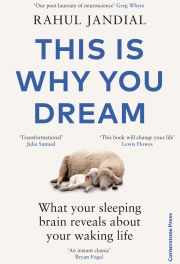This is Why You Dream

Rahul Jandial
Cornerstone Press, £18.99
Nothing seems more idiosyncratic than a dream. We often wake up remembering a bizarre experience that seems to be the unique product of our own unique mind. That’s certainly true if we look at the details – but the themes of our dreams are amazingly constant across cultures. For example, the most common dreams include falling, being chased and being late. Likewise, although our dreams sometimes contain accurate details about our lives, some things are universally missing. It is rare to be reading or writing in a dream, and computers, smartphones and social media are largely absent, despite their dominating roles in our lives.
Jandial, a neuroscientist and brain surgeon, speculates that the consistency of dreams and the absence of technology is because they focus on emotion and interpersonal relationships. This reveals their importance. Dreams, he argues, provide thought experiments that probe the relationships in our lives. They give us the mental capacity to improve the versatility of our thinking, emotions and instincts.
Given the importance of dreaming, it could be valuable in therapy. For example, Jandial speaks of the therapeutic value of lucid dreaming, including the potential for people to rewrite the end of their nightmares. This could be valuable for PTSD sufferers – and even I would be pleased to avoid my recurring dreams about being unable to climb down a ladder.
The first step is to identify that you are dreaming and This is Why You Dream gives some tips. Look at your hands and count your fingers, as for some reason hands look strange in dreams. You can also look for a clock or watch, as they are hard to read or morph in strange ways.
This all sounds simple, but did it work? When I got stuck on a ladder in my dream, I remembered that I needed to look for a clock; I even told someone at the top of the ladder what I was doing. However, I still managed to fool myself that this was real. I think I’ll need some more practice.
Rebecca Nesbit
Reviewed by writer, artist and ecologist Dr Rebecca Nesbit


